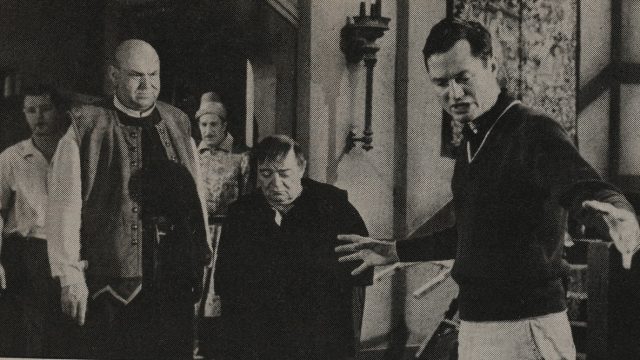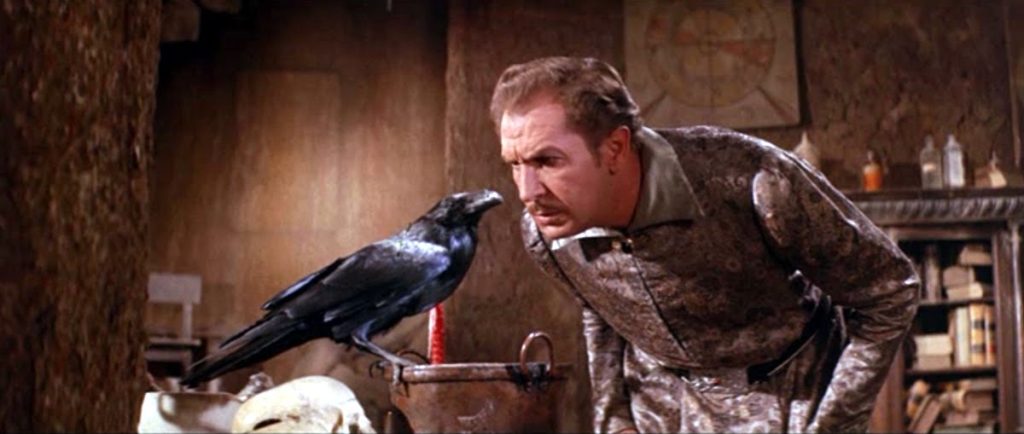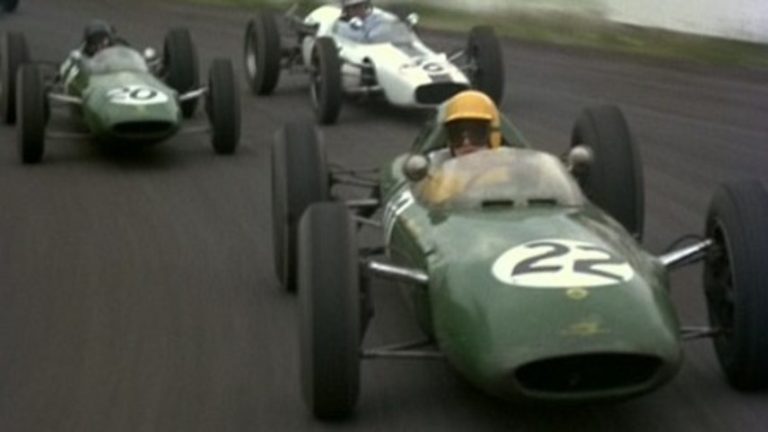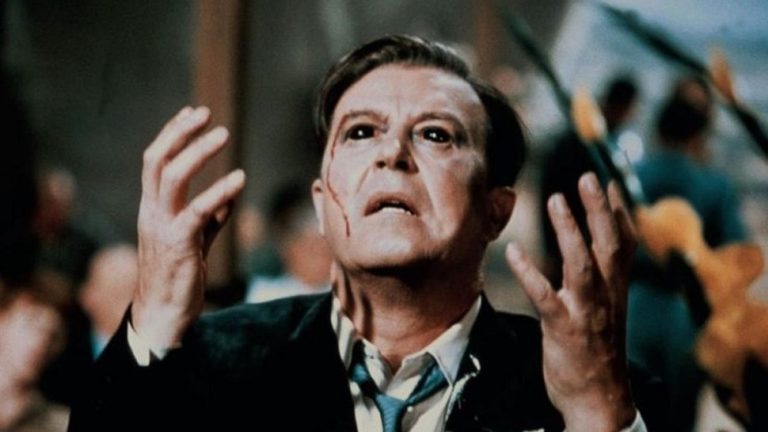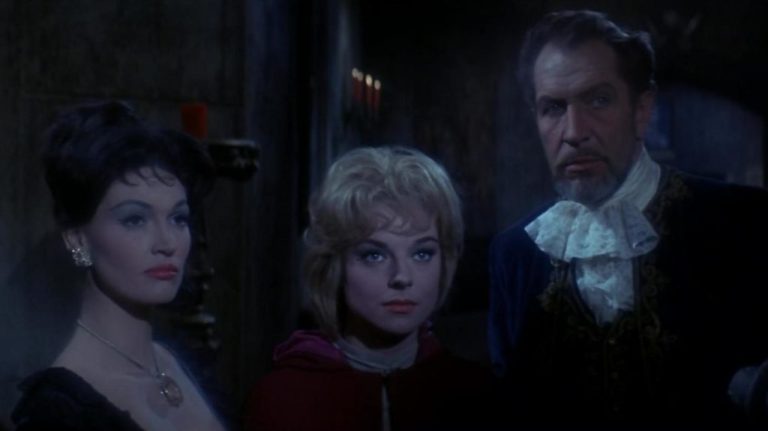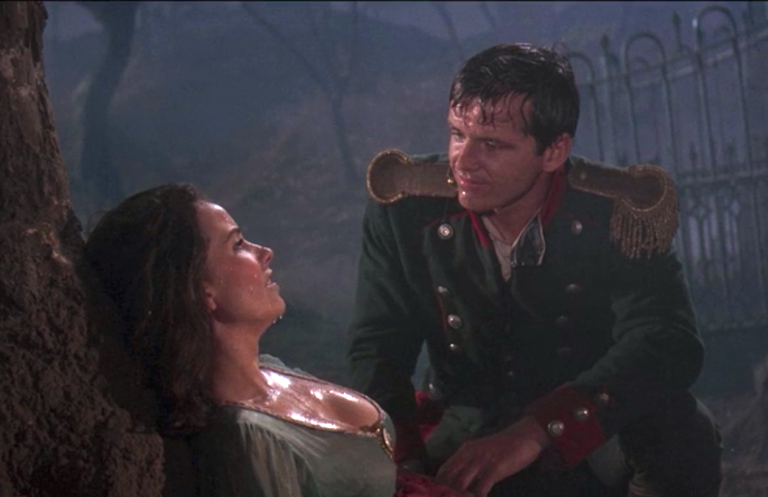There have been attempts to squeeze a buck out of fifty cents worth of film ever since enterprising filmmakers had to dodge Thomas Edison’s goons to do it. The tradition continues today with studios like Blumhouse taking small chances on strong visions of filmmakers or The Asylum which lazily attempts to fool audiences with “mockbusters” that resemble bigger films without putting any creative energy into them. In contrast with the latter, Roger Corman’s productions of the 1960s often felt like they were attempting to make themselves worthy of the audience they drew in with provocative titles and poster art. His better productions had the energy of a summer stock company putting on a show rather than a carnival barker hiding a tent of disappointments.
This is why Corman is maybe better known, and definitely better regarded, as an incubator of filmmaking talent than an auteur with his own talent to offer. His model was to be prolific, not perfect. Staying on schedule and within the budget was the primary job, but this didn’t preclude imagination. 1963 was a prime example of Corman taking the reins himself, directing five films (well… somewhere between 4.2 and 4.25 films depending on who you believe) released in a single year.
Here were his five films of 1963 in rough order of completion:
The Raven
One commonality between the Corman pictures of this era are their striking opening credits sequences. Often only tangentially related to the plot and never requiring the scheduling of the (relatively) more expensive on-camera talent, the more experimental preludes effectively set a tone for what’s to follow while helping pad the running time to feature-length without recycling more footage. The Raven‘s opening borrows a Corman trick from a couple other films, showing close ups of thick paint swirls with a heavy emphasis on red. An outline of a raven stands over the screen and we’re treated to Vincent Price’s recitation of the famous poem up to the point the movie’s story begins and parts ways completely with the source material.
This is in the midst of Corman’s cycle of Edgar Allan Poe adaptations which would reach its apex the next year with The Masque of the Red Death. Still The Raven is prime Corman Poe. In addition to Price, there’s an improv-prone Peter Lorre (quoth his raven when asked about Lenore’s return: “How the hell should I know?”), a shockingly baby-faced Jack Nicholson, and Boris Karloff looking in better shape than his rival Bela Lugosi did under Ed Wood’s tutelage though possibly in similar straits.
The Raven was shot in a mere 15 days but it has the scope of a film that took… about 17. It can be difficult to wow an audience on a time crunch but it didn’t stop Corman from trying. Early on Nicholson’s character gets possessed while driving a carriage and Corman cuts with so much energy you almost don’t notice that nothing really happens other than the horses run really fast down the trail. But to mirror those tantalizing intros, Corman consistently sends the audience away with a big payoff. Here it’s a sorcerer’s duel, where Price and Karloff face off in a contest of camera tricks. The animations and sly cuts may be cheap, but they’re entertaining tricks of the trade. Nobody asks the price of a rabbit out of a hat.
The Young Racers
This opens with stills of two young boys playing with racecars, imitating their engines with mouths. It’s an unshowy but intriguing start to a film that will involve rivalry between a couple men who seem only superficially removed from the boys in the pictures.
This is the most obscure of Corman’s ’63 pictures, the only one not floating around on one or more streaming services. It’s too bad, because it’s an interesting artifact, a quasi-Americanization of the kind of European films that Corman himself was often responsible for distributing to U.S. audiences. Corman’s cost-cutting measure only makes the film’s historical lens more interesting, as he filmed the races in the 1962 grand prix circuit. The film cuts in the shots of the real races to fit R. Wright Campbell’s story about a driver who risks life and wife with his reckless driving and philandering.
The Raven relied mainly on the stars of yesteryear, but The Young Racers is indicative of Corman’s collaborators who would later launch august careers. Sound recording is credited to “Francis Coppola,” who would also direct second unit and step in for a small role. Corman let the 23-year-old Coppola borrow the equipment – and the sets, and the crew, and the actors – to make his first feature Dementia 13.
Also, the main character is played by future producer Mark Damon with his lines dubbed entirely by an uncredited William Shatner!
X: The Man with X-Ray Eyes
Opening credits: a bloody eyeball, floating in liquid. Appropriate enough beginning for a film about ocular experimentation. Dr. James Xavier (old pro Ray Milland) develops a solution that gives X-Ray powers to eyes. Presumably that’s the power, although it sometimes seems the good doctor’s real power is making people take him at his word. He demonstrates his formula on a monkey who pulls levers to indicate he sees colored cards behind a barrier, though it never occurs to anybody that the monkey might just be screwing around.
This is one of Corman’s more celebrated non-Poe films, though the idea proves harder to dramatize than it would seem. Once he starts experimenting on himself, there’s the requisite scene of spying through everyone’s clothes at a twist party (it’s all backs and feet and shoulders – we’ve got another few years before American cameras dare move toward the torsos). But when Xavier attempts to use the x-ray vision for good it requires a belligerent doctor to stand in his way (not literally, that wouldn’t do any good). There’s a stop at a sideshow where the x-ray vision again finds easy true believers. Then – before being driven completely mad – Xavier performs unlicensed medical examinations on the poor. A lascivious and greedy Don Rickles makes this feel like a slimy enterprise, though it seems more like a decent public service.
Still, it’s an irresistible high concept for a movie, and Corman delivers in the homestretch with an all-time chilling ending (after a gratuitous helicopter chase scene to boot).
The Haunted Palace
A spider weaves a web in close-up and eventually snares a butterfly. The score by prolific B-movie composer Ronald Stein really shines in this credit sequence as the spider moves in for the kill.
This intro has about as much to do with the rest of the movie as Charles Beaumont’s script has to do with Poe, which is to say not much, even though this HP Lovecraft-inspired film is shoehorned into the Poe Cycle. Like the last Poe film it’s helmed by Vincent Price and also features a stable of aging but reliable actors like Debra Paget and Lon Chaney and the always beautifully worried Elisha Cook, Jr.
In The Haunted Palace the townspeople of Arkham do a Freddy Krueger on the local warlock named Curwen who is trying to open a portal to another dimension through sacrifice. They tie him to a tree and burn him, which will have unfortunate consequences. 110 years later and the fog still hasn’t lifted around Arkham. Everybody looks exactly like their great-great-grandfathers and are wary of the new guy in town who inherited Curwen’s palace and looks exactly like the guy their ancestor doppelgangers incinerated. It’s not clear how they know this since the only record of the original Curwen is a painting that frankly doesn’t look very much like Vincent Price.
The film is more sinister where The Raven is jokey, but it shares its love of stone rooms and dungeons, and between tours of these sets it also indulges in low- or no-budget tricks, like multiple flaming stuntmen and a couple effective shock cuts. Price delights in the macabre script as Curwen takes possession of his descendent and doles out revenge. Also like The Raven, this one ends with a castle set being burned. That footage was reused from the first Corman-Poe film, House of Usher. The Haunted Palace seems to have burned its own set. Though not all of it…
The Terror
Another indicative intro, as Boris Karloff wanders his stately stone castle in the dark. Where he’s going is a mystery – to us and to Karloff who was hired for two days to wander around sets from The Raven while Corman and company attempted to invent a movie to go with the leftover assets and crew at their disposal. Strung together with the Karloff footage were additional scenes with his Raven co-star Jack Nicholson and Nicholson’s then-wife Sandra Knight. Unlike Corman’s usual shoot schedules, the movie was cobbled together over the course of almost a year. Corman is one of either five or six directors of the movie depending on if one believes Nicholson’s claim to have taken the helm for a day.
And it shows! The result is as patchwork and uneven as one might expect from a game of exquisite corpse (which does, incidentally, feature an exquisite melting corpse). The plots to this point have spent little energy worrying about the purity of their internal logic, but The Terror‘s story is inane, at least when it’s comprehensible. There’s some discrepancy as to whether a character played by Jonathan Haze is named GUHS-tav or GOOS-tav. More time than usual is spent wandering a castle.
Of the directors, Coppola infuriated Corman by going overbudget and taking eleven whole days to shoot his portion. A local film student directed one portion and used the equipment to shoot his thesis film on the side; Corman couldn’t get too mad since he’d pulled the pretty much the same trick to begin production on The Terror in the first place. It’s just unfortunate that the movie isn’t as entertaining as the story of its making.
But of course with Corman you’re going to get sent out with a bang. Feeling he’d overdone endings with fire, Corman instead flooded the remaining castle sets from both The Raven and The Haunted Palace for the climax of The Terror. Some floating foam rocks aside, it’s a hell of an ending to a hell of a year in Corman.

